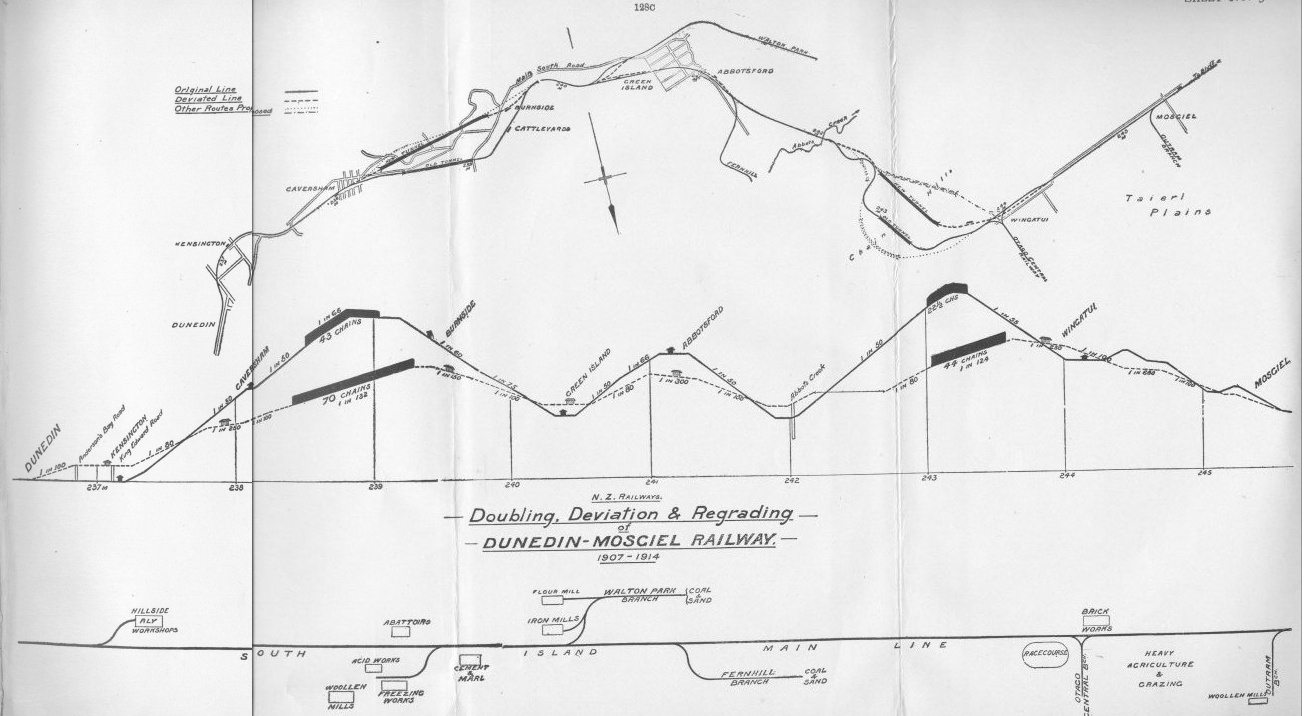Few people would know today that more than 100 years ago the railway to the south of Dunedin was very different than it is today. The large embankment as it can be seen in many places, particularly between Dunedin and Caversham, simply did not exist in the original construction works as the railway was built. Moreover, by digging around and exploring the area a bit more, it is possible to discover two disused railway tunnels, one buried beneath the streets of suburban Caversham, that have been disused and virtually forgotten for more than a century. How did this come to be the case?
When the railway through South Dunedin was first constructed in the 1870s the builders were faced with issues of geography, namely the hills of Caversham, Burnside, Green Island, Abbotsford and Wingatui. In fact almost the whole of Dunedin is constructed on hills and the entire line between Oamaru and Mosgiel is the hilliest part of the Main South Line by far. From Wingatui to Invercargill on the other hand is almost completely free of such challenges. In hilly country the extra cost of construction can make various compromises inevitable, usually in regard to curvature and gradient. Bridges and tunnels being very expensive works, the early railway builders sought to keep the need for these to a minimum. Lines would be built to the steepest and sharpest alignments possible and improved later when they had proved themselves, thus Dunedin has many improvements made both to the north and the south of the central business district. The compromise that was arrived at for the line to the south of Dunedin in the 1970s entailed the following significant features:
- From Kensington through Caversham a ruling grade of 1 in 50 to the summit then a similar downhill grade to Green Island at the bottom of the hill.
- The line then climbed again at grades of up to 1 in 50 to the second summit at Abbotsford. There was then another drop down to Abbots Creek.
- Another 1 in 50 climb was then faced to get to the top of the Chain Hills before descending again to Wingatui.
- The Caversham Tunnel of 43 chains was for a significant portion of its length uphill for southbound trains at 1 in 50.
- The Chain Hills Tunnel of 22 1/2 chains was for a significant portion of its length uphill for southbound trains at 1 in 50.
Due to the development of traffic the improvements became rapidly desirable. The goals for the project included:
- Duplicating the main line throughout the Dunedin to Mosgiel section. (Ironically, it was singled again in the mid 1980s, and the double track embankment around Caversham was replaced by a new single track embankment so the double track alignment could be reused by a motorway)
- Improving the gradients to make operation easier
- Replacing the two single track tunnels with double track bores
- Eliminating all the level crossings to make operation safer both for the railway and for traffic.
- Improving the stations along the route.

